Qi Xu
Representation Retrieval Learning for Heterogeneous Data Integration
Mar 13, 2025Abstract:In the era of big data, large-scale, multi-modal datasets are increasingly ubiquitous, offering unprecedented opportunities for predictive modeling and scientific discovery. However, these datasets often exhibit complex heterogeneity, such as covariate shift, posterior drift, and missing modalities, that can hinder the accuracy of existing prediction algorithms. To address these challenges, we propose a novel Representation Retrieval ($R^2$) framework, which integrates a representation learning module (the representer) with a sparsity-induced machine learning model (the learner). Moreover, we introduce the notion of "integrativeness" for representers, characterized by the effective data sources used in learning representers, and propose a Selective Integration Penalty (SIP) to explicitly improve the property. Theoretically, we demonstrate that the $R^2$ framework relaxes the conventional full-sharing assumption in multi-task learning, allowing for partially shared structures, and that SIP can improve the convergence rate of the excess risk bound. Extensive simulation studies validate the empirical performance of our framework, and applications to two real-world datasets further confirm its superiority over existing approaches.
Temporal Separation with Entropy Regularization for Knowledge Distillation in Spiking Neural Networks
Mar 05, 2025Abstract:Spiking Neural Networks (SNNs), inspired by the human brain, offer significant computational efficiency through discrete spike-based information transfer. Despite their potential to reduce inference energy consumption, a performance gap persists between SNNs and Artificial Neural Networks (ANNs), primarily due to current training methods and inherent model limitations. While recent research has aimed to enhance SNN learning by employing knowledge distillation (KD) from ANN teacher networks, traditional distillation techniques often overlook the distinctive spatiotemporal properties of SNNs, thus failing to fully leverage their advantages. To overcome these challenge, we propose a novel logit distillation method characterized by temporal separation and entropy regularization. This approach improves existing SNN distillation techniques by performing distillation learning on logits across different time steps, rather than merely on aggregated output features. Furthermore, the integration of entropy regularization stabilizes model optimization and further boosts the performance. Extensive experimental results indicate that our method surpasses prior SNN distillation strategies, whether based on logit distillation, feature distillation, or a combination of both. The code will be available on GitHub.
STAA-SNN: Spatial-Temporal Attention Aggregator for Spiking Neural Networks
Mar 05, 2025Abstract:Spiking Neural Networks (SNNs) have gained significant attention due to their biological plausibility and energy efficiency, making them promising alternatives to Artificial Neural Networks (ANNs). However, the performance gap between SNNs and ANNs remains a substantial challenge hindering the widespread adoption of SNNs. In this paper, we propose a Spatial-Temporal Attention Aggregator SNN (STAA-SNN) framework, which dynamically focuses on and captures both spatial and temporal dependencies. First, we introduce a spike-driven self-attention mechanism specifically designed for SNNs. Additionally, we pioneeringly incorporate position encoding to integrate latent temporal relationships into the incoming features. For spatial-temporal information aggregation, we employ step attention to selectively amplify relevant features at different steps. Finally, we implement a time-step random dropout strategy to avoid local optima. As a result, STAA-SNN effectively captures both spatial and temporal dependencies, enabling the model to analyze complex patterns and make accurate predictions. The framework demonstrates exceptional performance across diverse datasets and exhibits strong generalization capabilities. Notably, STAA-SNN achieves state-of-the-art results on neuromorphic datasets CIFAR10-DVS, with remarkable performances of 97.14%, 82.05% and 70.40% on the static datasets CIFAR-10, CIFAR-100 and ImageNet, respectively. Furthermore, our model exhibits improved performance ranging from 0.33\% to 2.80\% with fewer time steps. The code for the model is available on GitHub.
Session-Level Dynamic Ad Load Optimization using Offline Robust Reinforcement Learning
Jan 09, 2025



Abstract:Session-level dynamic ad load optimization aims to personalize the density and types of delivered advertisements in real time during a user's online session by dynamically balancing user experience quality and ad monetization. Traditional causal learning-based approaches struggle with key technical challenges, especially in handling confounding bias and distribution shifts. In this paper, we develop an offline deep Q-network (DQN)-based framework that effectively mitigates confounding bias in dynamic systems and demonstrates more than 80% offline gains compared to the best causal learning-based production baseline. Moreover, to improve the framework's robustness against unanticipated distribution shifts, we further enhance our framework with a novel offline robust dueling DQN approach. This approach achieves more stable rewards on multiple OpenAI-Gym datasets as perturbations increase, and provides an additional 5% offline gains on real-world ad delivery data. Deployed across multiple production systems, our approach has achieved outsized topline gains. Post-launch online A/B tests have shown double-digit improvements in the engagement-ad score trade-off efficiency, significantly enhancing our platform's capability to serve both consumers and advertisers.
ALADE-SNN: Adaptive Logit Alignment in Dynamically Expandable Spiking Neural Networks for Class Incremental Learning
Dec 17, 2024Abstract:Inspired by the human brain's ability to adapt to new tasks without erasing prior knowledge, we develop spiking neural networks (SNNs) with dynamic structures for Class Incremental Learning (CIL). Our comparative experiments reveal that limited datasets introduce biases in logits distributions among tasks. Fixed features from frozen past-task extractors can cause overfitting and hinder the learning of new tasks. To address these challenges, we propose the ALADE-SNN framework, which includes adaptive logit alignment for balanced feature representation and OtoN suppression to manage weights mapping frozen old features to new classes during training, releasing them during fine-tuning. This approach dynamically adjusts the network architecture based on analytical observations, improving feature extraction and balancing performance between new and old tasks. Experiment results show that ALADE-SNN achieves an average incremental accuracy of 75.42 on the CIFAR100-B0 benchmark over 10 incremental steps. ALADE-SNN not only matches the performance of DNN-based methods but also surpasses state-of-the-art SNN-based continual learning algorithms. This advancement enhances continual learning in neuromorphic computing, offering a brain-inspired, energy-efficient solution for real-time data processing.
Multi-View Incremental Learning with Structured Hebbian Plasticity for Enhanced Fusion Efficiency
Dec 17, 2024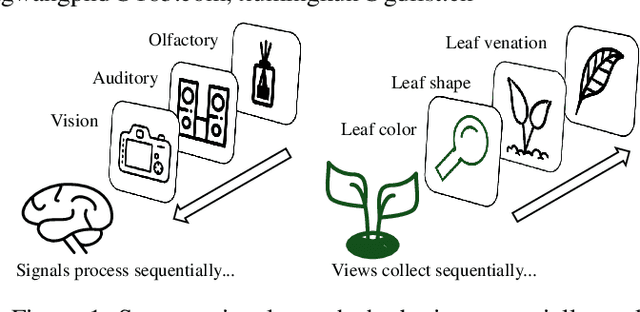

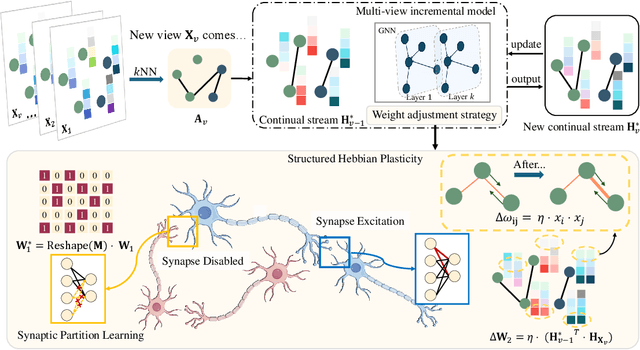

Abstract:The rapid evolution of multimedia technology has revolutionized human perception, paving the way for multi-view learning. However, traditional multi-view learning approaches are tailored for scenarios with fixed data views, falling short of emulating the intricate cognitive procedures of the human brain processing signals sequentially. Our cerebral architecture seamlessly integrates sequential data through intricate feed-forward and feedback mechanisms. In stark contrast, traditional methods struggle to generalize effectively when confronted with data spanning diverse domains, highlighting the need for innovative strategies that can mimic the brain's adaptability and dynamic integration capabilities. In this paper, we propose a bio-neurologically inspired multi-view incremental framework named MVIL aimed at emulating the brain's fine-grained fusion of sequentially arriving views. MVIL lies two fundamental modules: structured Hebbian plasticity and synaptic partition learning. The structured Hebbian plasticity reshapes the structure of weights to express the high correlation between view representations, facilitating a fine-grained fusion of view representations. Moreover, synaptic partition learning is efficient in alleviating drastic changes in weights and also retaining old knowledge by inhibiting partial synapses. These modules bionically play a central role in reinforcing crucial associations between newly acquired information and existing knowledge repositories, thereby enhancing the network's capacity for generalization. Experimental results on six benchmark datasets show MVIL's effectiveness over state-of-the-art methods.
Advancing Fine-Grained Visual Understanding with Multi-Scale Alignment in Multi-Modal Models
Nov 14, 2024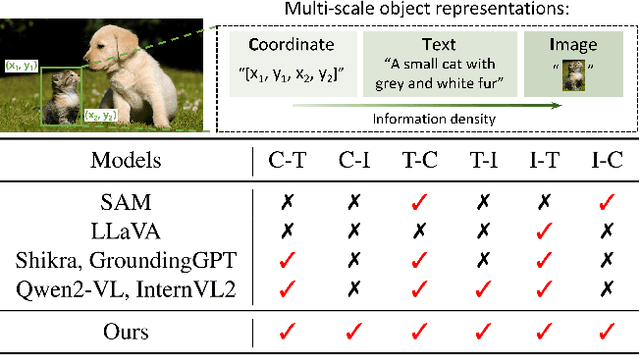
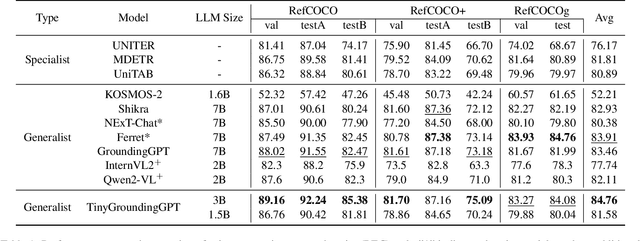
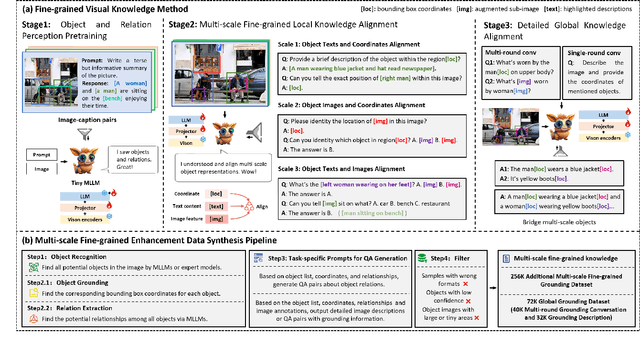
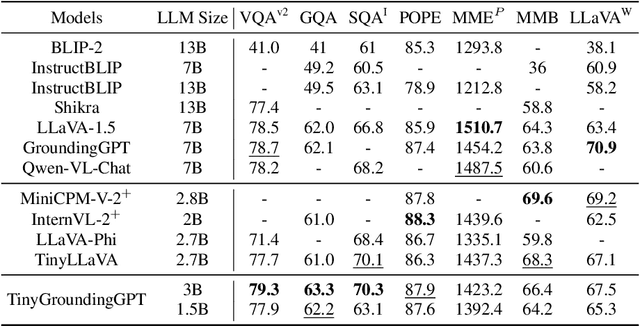
Abstract:Multi-modal large language models (MLLMs) have achieved remarkable success in fine-grained visual understanding across a range of tasks. However, they often encounter significant challenges due to inadequate alignment for fine-grained knowledge, which restricts their ability to accurately capture local details and attain a comprehensive global perception. While recent advancements have focused on aligning object expressions with grounding information, they typically lack explicit integration of object images, which contain affluent information beyond mere texts or coordinates. To bridge this gap, we introduce a novel fine-grained visual knowledge alignment method that effectively aligns and integrates multi-scale knowledge of objects, including texts, coordinates, and images. This innovative method is underpinned by our multi-scale fine-grained enhancement data synthesis pipeline, which provides over 300K essential training data to enhance alignment and improve overall performance. Furthermore, we present TinyGroundingGPT, a series of compact models optimized for high-level alignments. With a scale of approximately 3B parameters, TinyGroundingGPT achieves outstanding results in grounding tasks while delivering performance comparable to larger MLLMs in complex visual scenarios.
Underwater Object Detection in the Era of Artificial Intelligence: Current, Challenge, and Future
Oct 08, 2024Abstract:Underwater object detection (UOD), aiming to identify and localise the objects in underwater images or videos, presents significant challenges due to the optical distortion, water turbidity, and changing illumination in underwater scenes. In recent years, artificial intelligence (AI) based methods, especially deep learning methods, have shown promising performance in UOD. To further facilitate future advancements, we comprehensively study AI-based UOD. In this survey, we first categorise existing algorithms into traditional machine learning-based methods and deep learning-based methods, and summarise them by considering learning strategy, experimental dataset, utilised features or frameworks, and learning stage. Next, we discuss the potential challenges and suggest possible solutions and new directions. We also perform both quantitative and qualitative evaluations of mainstream algorithms across multiple benchmark datasets by considering the diverse and biased experimental setups. Finally, we introduce two off-the-shelf detection analysis tools, Diagnosis and TIDE, which well-examine the effects of object characteristics and various types of errors on detectors. These tools help identify the strengths and weaknesses of detectors, providing insigts for further improvement. The source codes, trained models, utilised datasets, detection results, and detection analysis tools are public available at \url{https://github.com/LongChenCV/UODReview}, and will be regularly updated.
Context Gating in Spiking Neural Networks: Achieving Lifelong Learning through Integration of Local and Global Plasticity
Jun 04, 2024Abstract:Humans learn multiple tasks in succession with minimal mutual interference, through the context gating mechanism in the prefrontal cortex (PFC). The brain-inspired models of spiking neural networks (SNN) have drawn massive attention for their energy efficiency and biological plausibility. To overcome catastrophic forgetting when learning multiple tasks in sequence, current SNN models for lifelong learning focus on memory reserving or regularization-based modification, while lacking SNN to replicate human experimental behavior. Inspired by biological context-dependent gating mechanisms found in PFC, we propose SNN with context gating trained by the local plasticity rule (CG-SNN) for lifelong learning. The iterative training between global and local plasticity for task units is designed to strengthen the connections between task neurons and hidden neurons and preserve the multi-task relevant information. The experiments show that the proposed model is effective in maintaining the past learning experience and has better task-selectivity than other methods during lifelong learning. Our results provide new insights that the CG-SNN model can extend context gating with good scalability on different SNN architectures with different spike-firing mechanisms. Thus, our models have good potential for parallel implementation on neuromorphic hardware and model human's behavior.
Towards Efficient Deep Spiking Neural Networks Construction with Spiking Activity based Pruning
Jun 03, 2024



Abstract:The emergence of deep and large-scale spiking neural networks (SNNs) exhibiting high performance across diverse complex datasets has led to a need for compressing network models due to the presence of a significant number of redundant structural units, aiming to more effectively leverage their low-power consumption and biological interpretability advantages. Currently, most model compression techniques for SNNs are based on unstructured pruning of individual connections, which requires specific hardware support. Hence, we propose a structured pruning approach based on the activity levels of convolutional kernels named Spiking Channel Activity-based (SCA) network pruning framework. Inspired by synaptic plasticity mechanisms, our method dynamically adjusts the network's structure by pruning and regenerating convolutional kernels during training, enhancing the model's adaptation to the current target task. While maintaining model performance, this approach refines the network architecture, ultimately reducing computational load and accelerating the inference process. This indicates that structured dynamic sparse learning methods can better facilitate the application of deep SNNs in low-power and high-efficiency scenarios.
 Add to Chrome
Add to Chrome Add to Firefox
Add to Firefox Add to Edge
Add to Edge